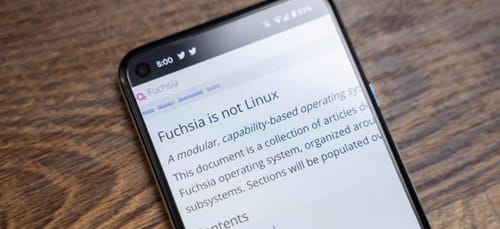 |
| Fuchsia OS runs Android and Linux software locally |
Google has been developing Fuchsia OS for many years, which is not explicitly based on Linux.
Fuchsia's latest OS proposal describes how to run unchanged software on Android and Linux.
One of the biggest problems with creating a new operating system (especially from scratch like Fuchsia) is the desire of users to run their favorite apps through that OS.
Take the example of fuchsia. In theory, it could be the successor to Chrome and Android OS. People may want to run Android and Linux apps with the native Fuchsia app.
Until now, people had hoped that by running a full copy of Linux in a virtual machine, Fuchsia could do so in the same way that Chrome OS could run Linux applications.
Since there is a project called arcvm, Chrome OS can use the same policy to run Android apps.
However, the virtual machine approach does have some drawbacks as it may be difficult or inconvenient to manage files between host (Fuchsia) and guest (Android).
Additionally, Fuchsia OS pays attention to security in order to isolate the programs from each other as much as possible.
To maintain this isolation from Linux applications, Fuchsia has to run many virtual machines, which can affect performance.
This week someone came up with a Fuchsia OS workaround to run software for Linux and Android.
Instead of running Linux itself, Fuchsia OS acquired a system called Starnix that acts as a compiler between instructions from the Linux kernel and instructions from the Zuchcon kernel Fuchsia Operating System.
The Linux software should be able to run normally, and Starnix will ensure that the application can run in Fuchsia as it is in Linux.
The proposal describes how developers would like to use Starnix and the suggestion uses Starnix to run the code multiple times directly from Android through Fuchsia OS.
Google is clearly hoping that Fuchsia OS can fully support Android apps without exception.
In the long run, Starnix should only be used as a temporary measure so that Google's Fuchsia OS can be used on a larger scale while developers migrate their apps to the new OS.
In almost all cases, the original Fuchsia app should perform better than the Linux or Android apps supported by Starnix.
